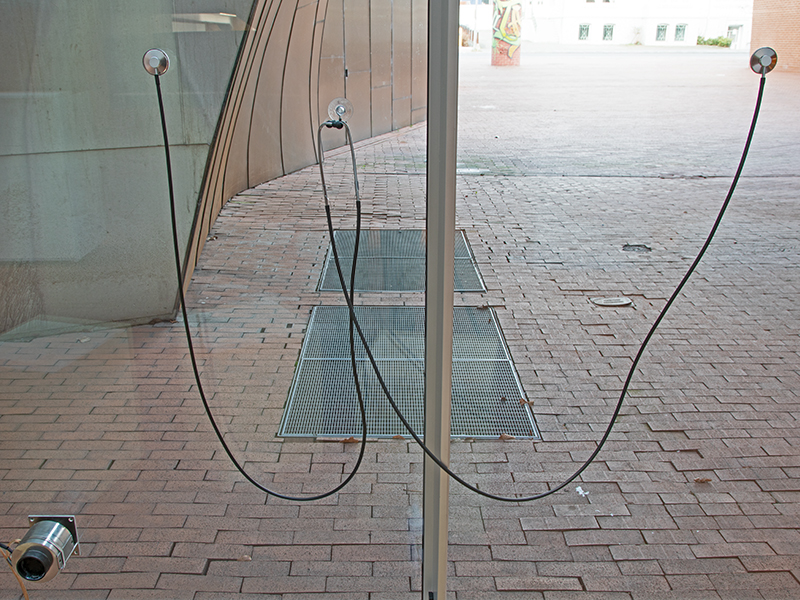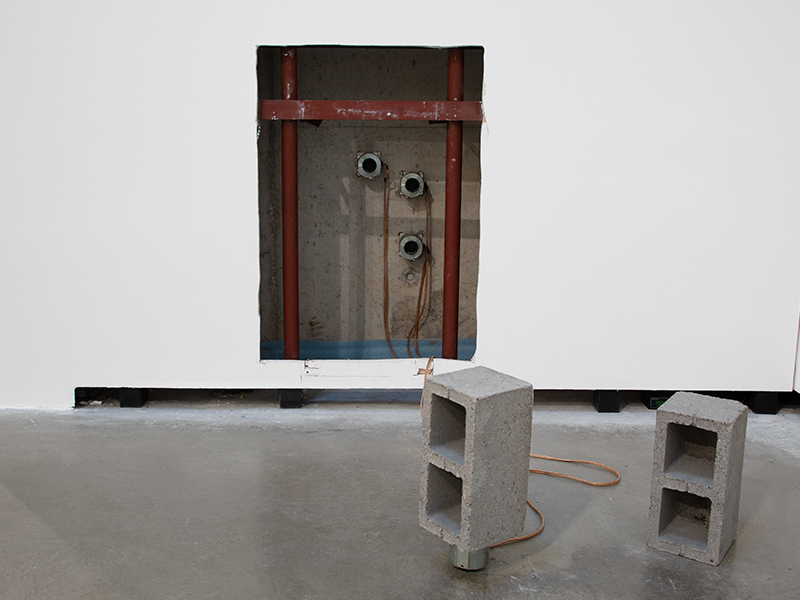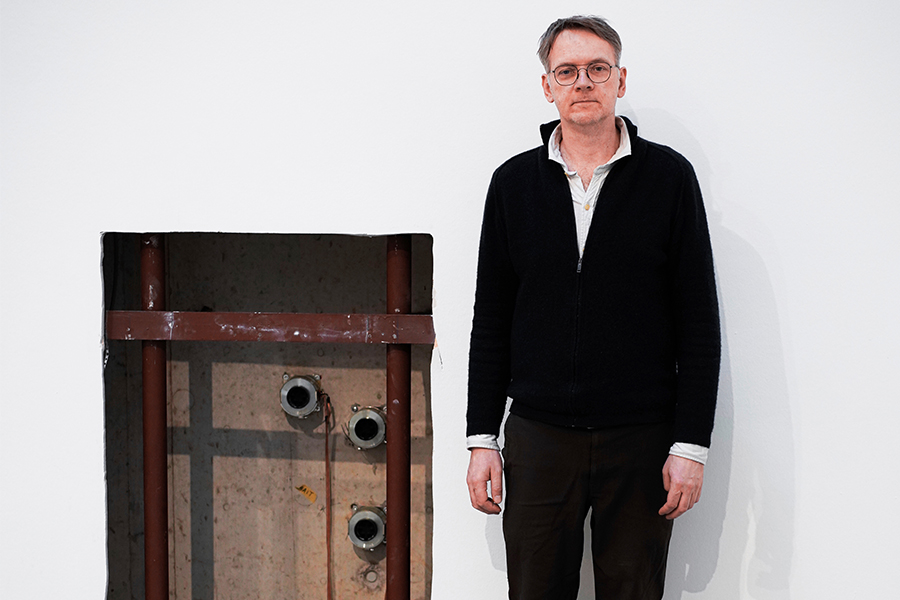5 Questions to Aernoudt Jacobs
The artist Aernoudt Jacobs explores the physical origin and bodily experience of sounds. With the help of two installations at Marta Herford, he makes it possible to hear the material of the building.
You are trained as an architect. What fascinates you about architecture and the physical origin of buildings?
Architecture is one of the oldest crafts and offers many solutions related to basic human conditions. It improves the quality of our existence by creating an additional skin, transforms our environment, that shelters, offers comfort… There are many relations between sound and architecture. Architecture, on one hand, are areas of solid constructions that delimit physical spaces. Sound, on the other hand, will delimit (aural) spaces, but with no fixed boundaries. Nature and human activities are generating sounds. This means that at times architecture can be empty and silent and that very same architecture can become noisy when people are utilizing the space or when nature is active.
Sonic architecture is a relatively new science. Sound influences how we deal with space. A given space that has been treated or not for sound will have a very different behavioral impact on how we use that given space. A space can become the body of an instrument, a sounding box that strengthens the resonance of sounds and amplifies their vibrations with reflections. Sound/hearing and space is also a fascinating combination because without any visual information sound can give us clues about a space.
What gave you that idea to study the sonic properties of the materials glass and concrete?
While making field recordings I quickly realized that sound is an energy that can travel through air, liquids and solids. The vibrations into the different states of matter can be captured with special microphones. This led into the research of the different types of microphones. The sonic character in solid concrete bodies of a building sounds very organic, complex and blurred, like a dense filter on a camera. Still, we recognize the acoustic contours of the activities and the human interactions within the building and its surroundings. The visual material aspects are also a very fascinating topic for me. When placing the stethoscope onto a transparent window, the site in front of you becomes what you hear. When listening into a building, the mind could start to trick you because you are listening to sounds you never heard before, you need to interpret novel sounds and make sense of them.

How is it possible to „hear“ a heartbeat in buildings?
In order to keep the audition process as transparent as possible, I use simple, straightforward technologies. In this case we have a set of special vibration speakers and stethoscopes that are placed at different locations of the Marta building. The vibration speakers transfer heartbeat vibrations into the building, the sounds will resound in the building’s architecture through resonance and wave propagation that have been activated solely through vibrations. With stethoscope earpieces visitors are able to tap into the glass and concrete materials and listen to different vibration phenomena on a microscopic level.
During the openening of the exhibition a sound perfomance took place with a polyrythmic quartet of heartbeats recorded live from four performers. The heartbeat pulsations have been amplified into the glass windowpanes of the museum.
How would you describe your approach to develop your site-specific installations?
With my site-specific installations I enable an acoustic dialogue with a site, sometimes revealing the properties of a building. I use different empirical strategies by investigating, listening, speculating, and using the unique spaces and materials of a building. I could for example use or add construction materials that are weaker or that will be prone to vibration phenomena. Sometimes I will apply listening devices or amplify dead or sweet spots or certain aspects that are typical to a building. Most site-specific installations have an interactive element or object that triggers the visitor to actively listen and experience the acoustics of a space in an idiosyncratic way.

What is your idea behind the two installations at the exhibition “Glass and Concrete”?
The idea is to create a sonic, a material and an interactive perceptual experience based on what you hear and what you see through the amplification of vibrations with simple and direct tools. The installation lets the listener discover on his/her own terms what is sound, and what does glass or concrete sound like. It tells about the environment and how a building sounds.
The aspect of listening is very much a process of auscultation. People can think through their ears. Sound never leaves the listener untouched because the process of hearing holds a physical property: low frequencies can be felt, sounds can resonate long after in your head. The ears and body can feel sonic pressure variations. Sound displaces our skin, our body, and the components inside our hearing organ. It hits, it touches upon the eardrum to present itself to the sonic scenery. The installation introduces a sound, a feeling, the pulsation of a heartbeat that everyone is familiar with in a nonconventional yet physical way by making material contact through immediate vibrations.


